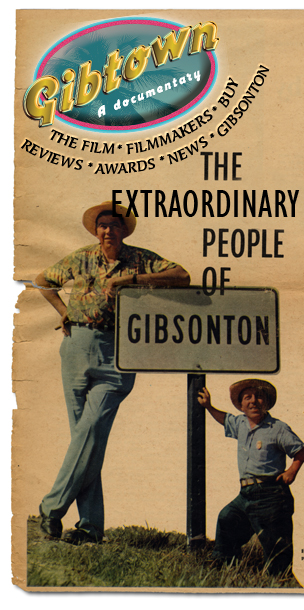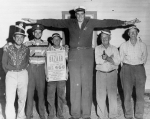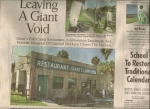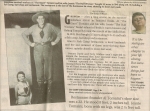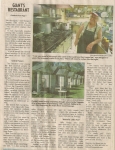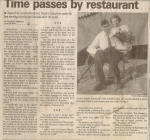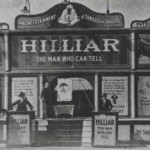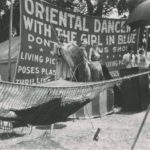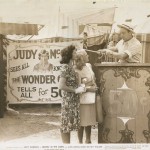How Gibtown Came To Be
Just about twenty minutes south of Tampa on U.S. Highway 41 lies the small town of Gibsonton, Florida. On the surface it appears to be yet another non-descript, backwater town; a town frozen in time since the Interstate system replaced the original U.S. highways. But Gibsonton has a secret, a hidden identity to be discovered if one ventures down the side streets of town. Down these streets, you may discover monkeys or elephants in a front yard or a variety of carnival rides. You may have even met Aunt Dotty “The Fat Lady.”
Gibsonton, also known as “Showtown, U.S.A., has been the winter home for a large population of circus and carnival sideshow performers for nearly 70 years. And it’s probably the only place in America where your local police chief was once a dwarf and your former fire chief was over 8 feet tall. (See above poster)
Eddie and Grace LeMay ran one of the best carnival cookhouse concessions of the 1920s. One fall day the couple stopped their trailer by the Alafia River, in a sleepy Florida town called Gibsonton, for what they thought would be an hour’s rest. Eddie cast a fishing line in the water and immediately caught several fish for dinner that night. Moments later a group of locals came walking toward the trailer and the couple figured this would be the end of their stay. But the townspeople greeted them warmly and ever since then, Gibsonton, known to the locals as “Gibtown,” has been a gathering place for show people spanning four generations.
Gibtown became a popular winter fishing destination for many carnival and sideshow workers from the 1920s.
Not so long ago you could still catch a glimpse of a town where the neighbors are showmen such as Ward Hall and his World of Wonders, Melvin Burkhart who retired to Florida like many other senior citizens, but will still nail a six- inch spike into his head for anyone who asks politely; Jeanie Tomaini the “half-girl” who married Al, an 8 foot 4 inch giant; the Parnells, an octogenarian couple who have produced various performing monkey acts for over 40 years. During the off-season, a walk through Gibsonton revealed ferris wheels, vividly painted show fronts and an occasional elephant or llama, bringing back memories of carnival era which has all but disappeared.
Shortly after this time, Al and Jeanie Tomaini opened a fishing camp and restaurant called “Giant’s Fish Camp.” Al stood at over 8 feet tall while his wife Jeanie was approximately 2 and a half feet tall and toured the carnival sideshow circuit as the “half-woman.” But to Jeanie, the size difference was never an issue.
Soon after the Tomaini’s settled into town, more carnival folks seeking a sense of community and acceptance, followed. As carnival folk spent more than half of the year on the road and were strangers in every town they passed through, Gibsonton was the natural choice for many of them.
And the town embraced them even enacting special zoning laws known as “Residential Business Zoning” which still allow people to keep show animals and carnival rides and exhibits on their property. Roy Huston, an illusionist, and Gibsonton resident once said, “It’s the only settlement in America classed as RSB: a Residential Business Zone which gives the locals the right to train grizzly bears or store dodgem cars in their gardens.”
GIBTOWN from Motocinema on Vimeo.

